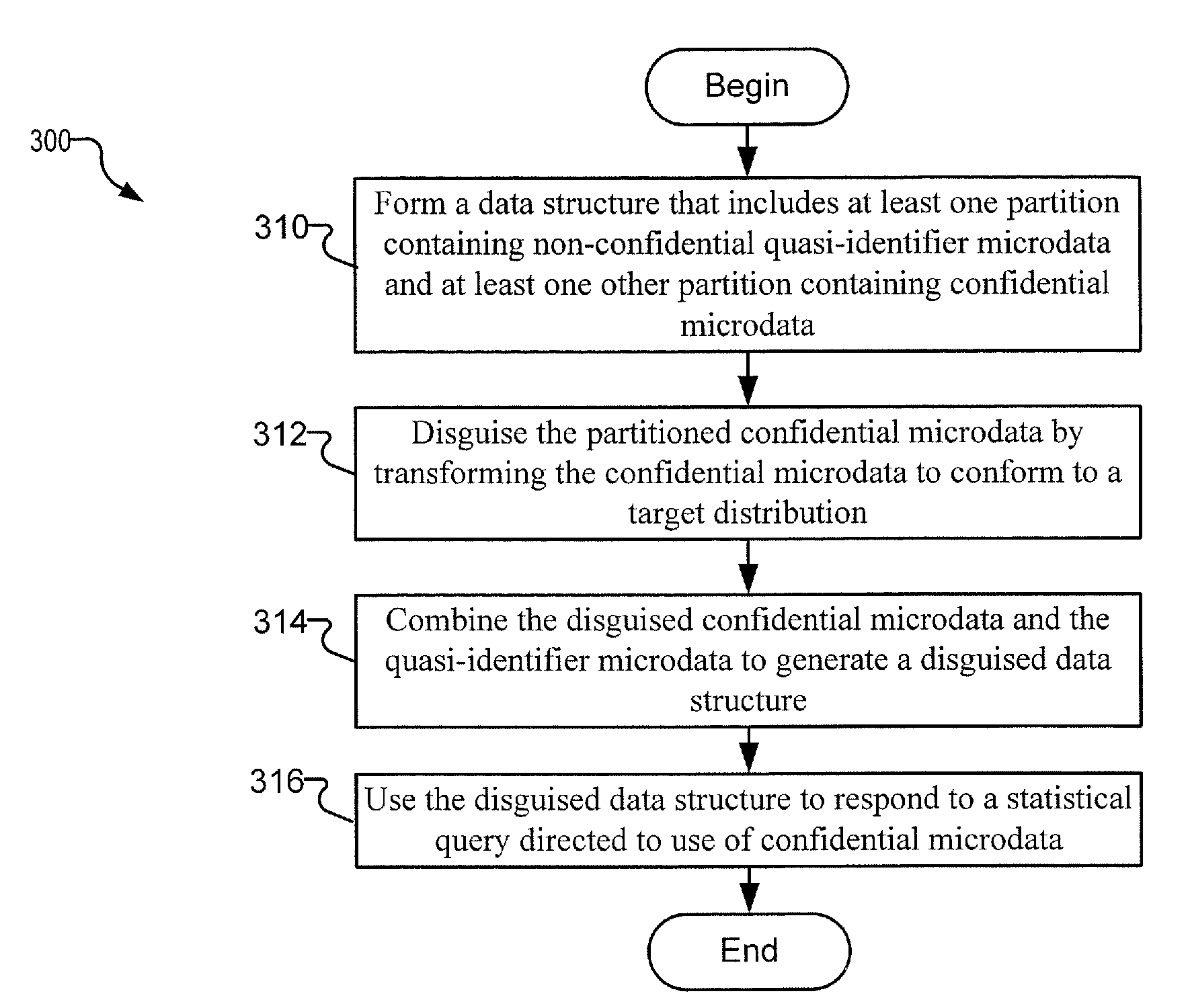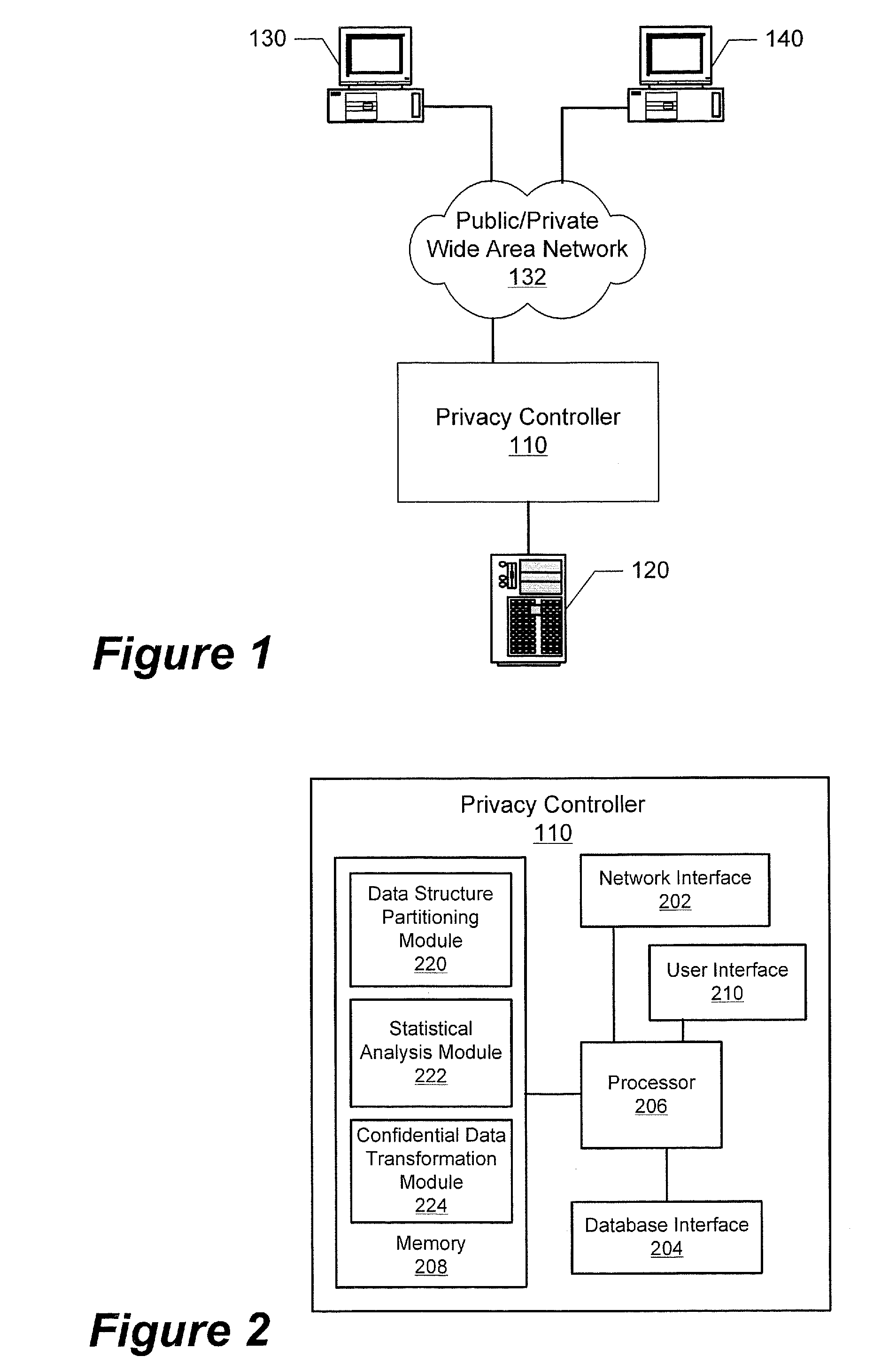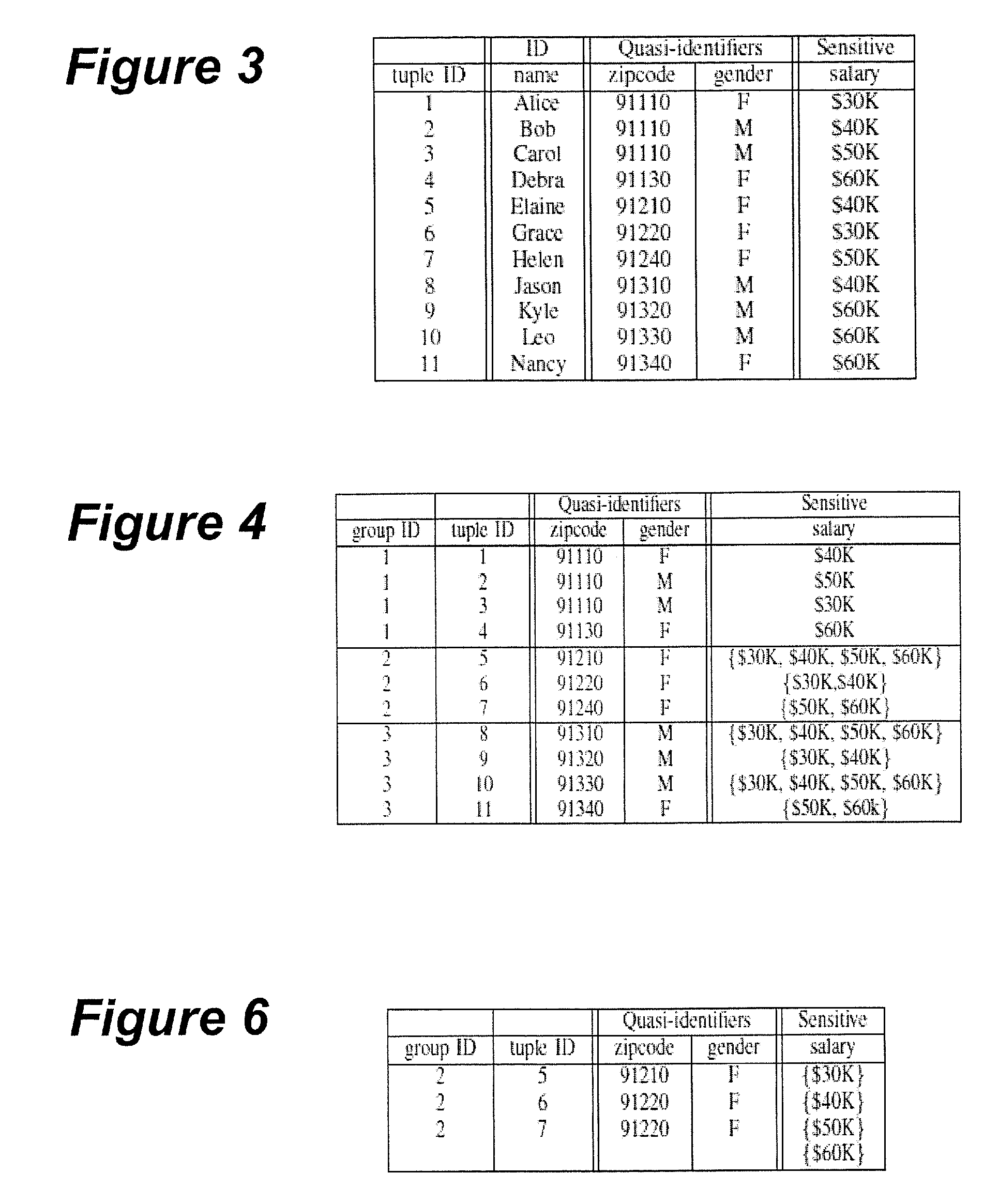Systems and associated computer program products that disguise partitioned data structures using transformations having targeted distributions
a technology of partitioned data and computer program products, applied in the field of computer databases, can solve the problems of affecting the accuracy of ad hoc query answering, and using fake values may add significant challenges to the anonymization process
- Summary
- Abstract
- Description
- Claims
- Application Information
AI Technical Summary
Benefits of technology
Problems solved by technology
Method used
Image
Examples
example 1
[0089]Here we use an example to show in detail how an exemplary embodiment of the algorithm may be carried out by the privacy controller 110. Consider the privacy-annotated hierarchy H in FIG. 5 and a multiset g of sensitive attribute values {30K, 30K, 40K, 40K, 50K, 60K}.
[0090]At the beginning, the algorithm sets m to |g|=6, and calls MinSumOfRange(g, H, m). For the two children of the root of H, we have |g{30K,40K}|=4 and |g{50K,60K}|=2. Since the ratio between the weights of {30K, 40K} and {50K, 60K} is 1:1 in H, we can at most have two subdomains in the subtree rooted at {30K, 40K} in the final P-private generalization. Otherwise, the background distribution cannot be preserved. In other words, the maximum m-bound allocation is (2, 2). And the algorithm outputs 6−2−2=2 generalized domain corresponding to the root, which is {30K, 40K, 50K, 60K}. This means that any P-private generalization should contain at least two root domains.
[0091]Next, the algorithm calls MinSumOfRange(g, H...
example 2
[0102]Suppose g={1, 3, 5}, t=2, and H is the uniform distribution over {1, . . . , 8}. The optimal solution is for f to have only one fake value (either 7 or 8). We can verify that any f with two fake values is suboptimal. This example suggests that it is not sufficient to only examine set f that contains exactly t fake tuples.
[0103]It can be shown that there exists fake value set f which is locally optimal but suboptimal globally. By locally optimal, we mean that for any f1 and f2, where |f1|=|f|−1 and |f2|=|f|+1, we have minSOR(g ∪ f1, H)>minSOR(g ∪ f, H) and minSOR(g ∪ f2, H)>minSOR(g ∪ f, H).
example 3
[0104]Consider g={1, 3, 5, 7} and t=4. We can see that f={1, 5} is a locally optimal solution. The optimal generalization for g ∪ f is {[1-2], [3-4], [5-6], [7-8], [1-4], [5-8]}, whose sum of ranges is 10. For any f1 with size 1, the optimal generalization for g ∪ f1 is {[1-2], [3-4], [5-6], [7-8], [1-8]}, whose sum of ranges is 11. Similarly, for any f2 with size 3, the optimal generalization for g ∪ f2 is {[1-2], [3-4], [5-6], [7-8], [1-4], [5-8], [1-8]1, whose sum of ranges is 17. Though f is locally optimal, it is not a globally optimal solution, which should be f={2, 4, 6, 8}, as minSOR(g ∪ f, H)=0.
[0105]The above example shows that problem 5.1 cannot be solved by sequentially scanning fake value sets from size 0 to size t and using local optimality as a stopping condition.
[0106]To further show the challenges in solving this problem, let us consider a simpler case. Suppose we only allow to add a single fake value, and the background distribution is uniform. Assume in g the numb...
PUM
 Login to View More
Login to View More Abstract
Description
Claims
Application Information
 Login to View More
Login to View More - R&D
- Intellectual Property
- Life Sciences
- Materials
- Tech Scout
- Unparalleled Data Quality
- Higher Quality Content
- 60% Fewer Hallucinations
Browse by: Latest US Patents, China's latest patents, Technical Efficacy Thesaurus, Application Domain, Technology Topic, Popular Technical Reports.
© 2025 PatSnap. All rights reserved.Legal|Privacy policy|Modern Slavery Act Transparency Statement|Sitemap|About US| Contact US: help@patsnap.com



